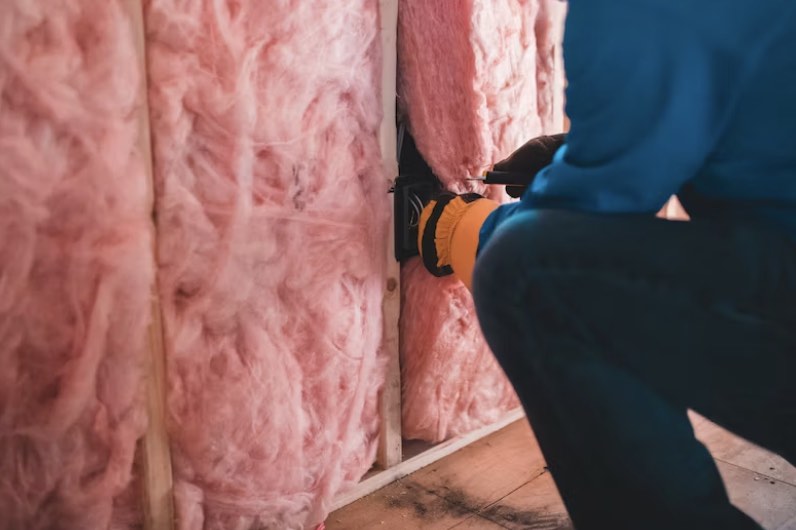In our next addition of commercial real estate investing, I want to talk about nursing homes. Investing in real estate is all about identifying opportunities that combine steady demand with strong returns and few sectors offer better potential than the booming senior housing market.
With the aging baby boomer population driving unprecedented growth in the senior housing sector, skilled nursing facilities, assisted living facilities, and other senior housing properties are becoming hot commodities for savvy investors. This isn’t just about buying any building; it’s about tapping into the rising need for senior housing facilities and embedding yourself in a thriving market for health care real estate.
Why focus on senior living? It’s simple, the demand is skyrocketing. Health care costs may rise, but as retirees seek quality care and comfort in their golden years, senior housing is emerging as essential.
Growing Demand
The senior housing market is exploding with opportunity, and nursing homes are at the heart of this growing sector. By 2030, all baby boomers will be over the age of 65, and for the first time in U.S. history, seniors will outnumber children. This seismic demographic shift, as reported by the U.S. Census Bureau, is driving an unprecedented demand for nursing homes, assisted living facilities, and specialized care units for older adults. For real estate investors, this is more than a statistics-driven trend—it’s a chance to step into a thriving industry with secure, long-term potential.
Government Backed Payments (In Part)
One of the most compelling aspects of investing in nursing homes is the stability offered through government programs like Medicaid. These programs often shoulder a significant portion of care costs, providing a government-backed income stream. This means your investment is tied to reliable funding sources rather than being fully dependent on out-of-pocket payments or private payers. Not only does this position nursing homes as a recession-resilient investment, but it also adds an extra layer of financial security to your portfolio.
You could invest in a skilled nursing facilities with round-the-clock care or assisted living designed for a mix of independence and support. The underlying real estate has become a critical piece of this puzzle. With experienced professionals managing these properties, investors can enjoy a smooth, often hands-off approach to growing their portfolio. The senior housing sector deserves a spot on your radar as a real estate investor. It’s more than real estate, it’s a chance to meet a profound societal need while securing your financial future.
Evaluating the Quality of the Operations Team
The success of any senior housing investment depends heavily on the team managing the property. A strong operations team can drive occupancy rates, maintain high care standards, and streamline expenses. When assessing operational quality, consider the following:
- Track Record
Look at the operator’s history. Have they successfully managed similar properties? What do their performance metrics, such as profit margins or resident retention, indicate? - Experienced Professionals
Properties run by experienced administrators and caregivers often perform better in attracting and retaining residents. Skilled staff also reduce the likelihood of turnover, which can impact profitability. - Reputation
Check online reviews, testimonials, and resident feedback to gauge the overall satisfaction with the operations team. A poor reputation can deter future tenants. - Scalability
Ensure the team has the capacity and plan to handle growth or expansion if needed.

Location, Location, Location
Choosing the location of a senior housing property is critical. Market demand and competition can vary widely based on geography, which means location can make or break an investment. Here’s what to look for:
- Strong Demand Areas
Regions with a higher concentration of retirees and seniors—such as states like Florida, Arizona, and California—tend to see greater demand. Market studies can help identify these hot spots. - Proximity to Amenities
Properties near hospitals, clinics, and shopping centers provide convenience to residents, increasing their appeal. - Low Competition
A market saturated with senior housing facilities could see downward pressure on occupancy rates and rental income. Look for areas where there’s room for growth without intense competition. - Future Growth
Consider regional growth trends. Areas experiencing population increases and infrastructure development are likely to see sustained demand for senior housing.
Assessing Amenities and Facility Design
Modern and thoughtful design can give a senior housing property an edge in attracting tenants. Investors should consider the following features when evaluating facility quality:
- Functional Layouts
Facilities should cater to the mobility and sensory needs of older adults. Wide hallways, accessible bathrooms, and good lighting are essential. - Desirable Amenities
Common areas, gardens, recreation spaces, and wellness programs can make a property attractive to potential residents. - Safety Features
Properties equipped with safety measures such as emergency call systems, fire sprinklers, and monitored entryways offer peace of mind to families and residents.
A property with appealing amenities and smart design will likely command higher rental rates and occupancy.
Economic and Financial Factors to Review
While senior housing is resilient, investors must still examine economic factors carefully. Here’s what to keep in mind:
- Capital Requirements
Senior housing properties often have higher upfront costs due to their specialized design and staffing needs. Ensure your investment capital aligns with these demands. - Operational Expenses
Staffing is typically one of the largest costs in senior housing. Evaluate whether the property’s revenue can cover these and other expenses like maintenance and utilities. - Revenue Potential
Assess rental rates, occupancy levels, and market demand to predict your return on investment. Facilities in high-demand areas with competitive features often generate premium income. - Economic Downturn Resilience
The needs-based nature of senior housing makes it more stable during challenging economic periods. However, it’s wise to stress-test your investment against possible financial dips.

Regulatory and Compliance Considerations
The senior housing sector is subject to regulations, which can vary by state or region. Non-compliance can impact profitability, so due diligence is essential. Investigate the following:
- Licensing Requirements
Ensure the property complies with local licensing requirements for its operations, whether it’s a skilled nursing facility or an assisted living property. - Health and Safety Standards
Facilities must meet health, hygiene, and safety standards. An inspection failure could lead to fines or shutdowns. - Changes in Regulations
Keep an eye on potential legislative updates that could impact operating costs, staffing ratios, or resident care standards.
Regulatory compliance is a crucial element that can influence both profitability and the viability of the investment over time.
Types of Nursing Home Investments
Nursing home investments come in several forms, so there’s something suitable for every type of investor. For those who enjoy direct involvement, purchasing the underlying real estate can offer complete control, along with responsibilities like securing tenants and managing maintenance and operations. Meanwhile, passive investors can look into real estate investment trusts (REITs) or Delaware statutory trusts (DSTs) for a hands-off approach.
One of the leading asset types in this market is skilled nursing facilities, which offer intensive medical care for older adults, often including treatment for chronic diseases like Alzheimer’s disease. Assisted living facilities, on the other hand, cater to residents who require moderate help with daily activities but still value their independence.
Another emerging investment opportunity lies in special care units, such as those designed for memory care, which provide a secure and soothing environment tailored to individuals with cognitive impairments. Investors could also explore opportunities within continuing care retirement communities that offer a range of care options in a single location, creating a sense of connectivity and convenience for residents.
Investing in Skilled Nursing Facilities
Skilled nursing facilities represent a lucrative and strategic investment. These facilities cater to a critical need within the health care industry, making them both a needs-based investment and an appealing option for those seeking diversification. Whether you are an established player in the market or new to the industry, skilled nursing facilities provide stability even during an economic downturn, as demand remains steady regardless of larger economic trends.
However, success in this space relies on thorough due diligence. Begin by reviewing the property’s physical condition, operational efficiency, and compliance with regulations. Look closely at the management team, assessing its experience in delivering high-quality care and managing health care complexities. Take into account rising health care costs and how they may affect long-term profitability.
Finally, consider the estimated rate of growth for demand in the area. For instance, the aging population and expected increases in chronic illnesses among retirees make this a growth-oriented segment with immense profitability.
Managing Investment Risk
No investment is without its challenges, and nursing homes are no exception. Among the most critical risks investors encounter are lawsuits, employee turnover, and operational inefficiencies. However, you can minimize these risks with a strategic approach to management and operations.
Start by keeping operations compliant with industry regulations and creating a professional and welcoming workplace environment to retain staff. Staff turnover can be mitigated by maintaining wellness programs and career development options, which also enhance the overall reputation of the facility among both employees and residents.
The security of your investment also depends on how well you address potential external risks, such as shifts in government policies or funding related to health care. Diversifying your asset types, from facilities that offer memory care to more consolidated options like CCRCs, can also ensure longer-term stability.

Partnering with Experienced Operators in the Senior Housing Sector
One of the best ways to safeguard your investment is by partnering with experienced professionals who have a proven track record of managing successful senior housing facilities. They bring knowledge of industry trends, property dynamics, and the needs of older tenants.
Experienced operators are particularly adept at managing the transition of residents, including transportation logistics and daily care coordination. Their insights help to maintain high occupancy rates and anticipate future needs, making your properties more competitive. This collaboration also gives investors peace of mind, paving the way for smoother operations and better margins.
Tax Benefits and Incentives in the Senior Housing Market
Another major perk of investing in senior housing is access to generous tax benefits. Opportunities for depreciation, tax credits, and other write-offs can significantly improve profitability. For instance, purchasing a nursing home property often qualifies investors for deductions related to property depreciation, interest expenses, and operational costs.
Additionally, many governments offer incentives to encourage the development of senior housing properties—especially those geared toward low-income and vulnerable populations. Exploring these incentives with a tax professional is an invaluable step in maximizing profits for your own portfolio.
Check Back for Updates
Investing in nursing homes combines the human touch with financial opportunity—a rare mix that is both emotionally and economically rewarding. By carefully evaluating each property, partnering with strong operators, and leaning into the growing needs of the baby boomer generation and beyond, you have the chance to create a portfolio built not only on numbers but also on meaningful impact.
For investors hunting for the perfect addition to their senior housing properties, this is your moment to turn a hugely estimated demand shift into a thriving income stream. It’s time to take steps to engage with this industry and bring your strategy to life for the long-term.

Join Our Real Estate Investing Network
Our community thrives on collaboration, offering a space to exchange ideas, explore lucrative opportunities, and tackle challenges head-on. We thrive on people who are keen to discuss the growing demand for senior living options, analyze diverse asset classes, and evaluating potential risks in the market. We seek to be the go to network for real estate pros.
Together, we can uncover insights about the latest developments in housing and senior-focused communities, assess occupancy trends, and explore the role of technology in driving operational success. Gain valuable perspectives on serving older adults, running a responsible business, and delivering top-tier services that exceed market expectations.
The relationships you build here will be invaluable, strengthening your expertise, your estimated returns, and your ability to identify essential investment paths. Don’t miss this chance to network with investors, operators, and companies shaping the future of real estate. Join us and take your next ambitious step today.



